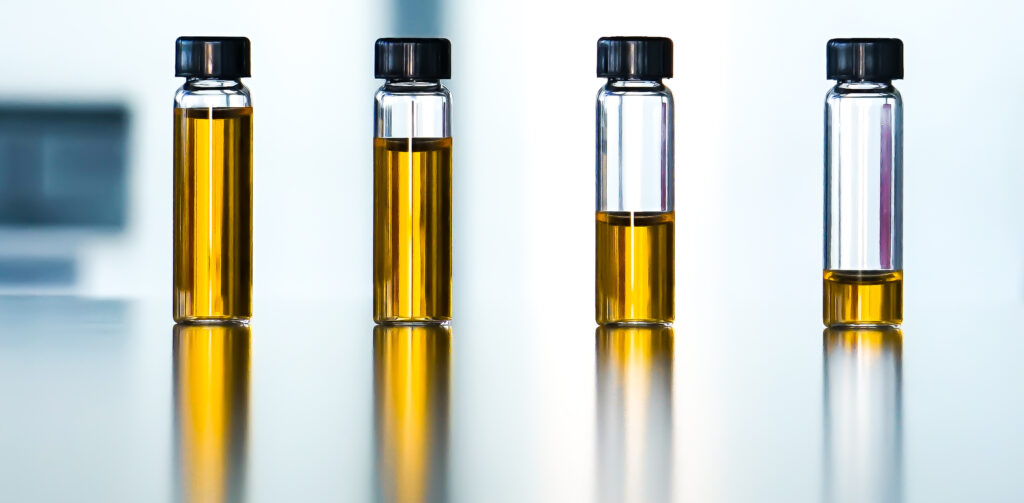What is The Science of Soil Microbial Communities?
Over the years, Aaron D Peacock, the Director of Molecular Biology for Microbac Laboratories, has written hundreds of studies relating to specific aspects of environmental science and testing. Here are some of his summaries based on what goes on beneath our toes, the microbial community within the soil.

Can repeated disturbance of soil microbial environments be restored?
Some of the best surviving natural grounds in the United States is on military reservations. These habitats have been protected from development, however, the responsibilities of military training often require disturbance of these habitats. We wanted to find how the soil microbial community of a long-leaf pine ecosystem at Fort Benning, Georgia responded to a military disturbance.
We used soil microbial biomass and community composition as ecological indicators. What we saw was that increasing military traffic decreased soil viable biomass, biomarkers for microeukaryotes and gram-negative bacteria, while increasing the proportions of aerobic Gram-positive bacterial and Actinomycete biomarkers.
Soil samples were taken from four different levels of military traffic areas (which included reference, heavy, moderate, and light), with additional samples taken from previously damaged areas that were remediated with new trees and other plant growth.
What was found during the investigation is that as soil is remediated, it does not escalate through states of succession in the same way as it descends from disturbance. Further investigation was needed to see the relationship between the disturbance and recovery process as a way of indicating microbial resilience to repeated disturbance/recovery cycles.
Plant diversity, soil microbial communities, and ecosystem function: are there any links?
A debate existed in ecology centers on which ecosystem function depends on biodiversity. During our study, we found strong evidence from a long-term field manipulation of plant diversity that soil microbial communities, and the key ecosystem processes that they facilitate, are significantly altered by plant species density.
After seven years of plant growth, we determined the function and composition of soil microbial communities beneath experimental plant diversity treatments that held 1-16 species. We discovered through this process that greater plant diversity and N mineralization rates led to better community biomass, fungal abundance and respiration. However, changes in microbial community biomass, activity, and composition largely resulted from the higher levels of plant production associated with greater diversity, rather than from plant diversity per se.
Because greater plant production couldn’t explain the rapid N mineralization, it indicated that plant diversity influenced this microbial process, which controls rates of ecosystem N cycling. Greater N availability most likely contributed to the positive relationship between plant productivity and diversity in the N-limited soils within the experiment. All of this suggests that plant-microbe interactions in soil are an essential component of plant diversity’s influence on ecosystem function.
Microbial community PLFA and PHB responses to ecosystem restoration in tallgrass prairie soils
Native North American prairie grasslands are well known for very rich soil that has good structure and a lot of highly organic content and microbial biomass. In this particular study, surface soils from three prairie restoration of varying ages and plant community densities were compared with a nearby undisturbed native prairie land and also a cropped agricultural field. Certain elements that were being compared included the soil’s physical, microbial, and chemical compositions.
The soil’s moisture, organic matter, total nitrogen, total sulfur, total carbon, microbial biomass and water-holiding abilities were significantly greater in the virgin prairie lands as well as the two long term prairie restorations (21 and 24 years), when compared to the agricultural field and the restoration that was started more recently (7 years prior).
On the other hand, soil bulk density (which is how compact soil particles are in a particular area), was far greater in the agricultural and recently restored sites.
In most cases though, the quality of soil and microbial structures in the restoration sites was a middle-ground between the agricultural land and the virgin land. Levels of poly-β-hydroxybutyrate (PHB) and PLFA indicators of nutritional stress were significantly greater (p<0.05) in the agricultural and recent restoration sites than in the long-term restorations or the native prairie.
Overall, what the analysis discovered is that prairie age was the greatest factor in an indication of PLFA microbial community composition. These findings suggest that prairie restoration can lead to improved quality of surface-level soil, but it can take decades to see these results.
So as you can see from the study summaries above, there is a lot that can affect the soil microbial community. Ground disturbance, plant diversity, and age can all collectively influence the quality and richness of soils regardless of area. Are you interested in getting your soil tested? Get in touch with the team at Microbac today!

This document is not intended to provide scientific or other advice to be used in a specific fact situation and is intended for general information purposes only. While we encourage you to share this document with others, this document or any portion of it may not be quoted, used in, or referred to in another publication without our express permission.